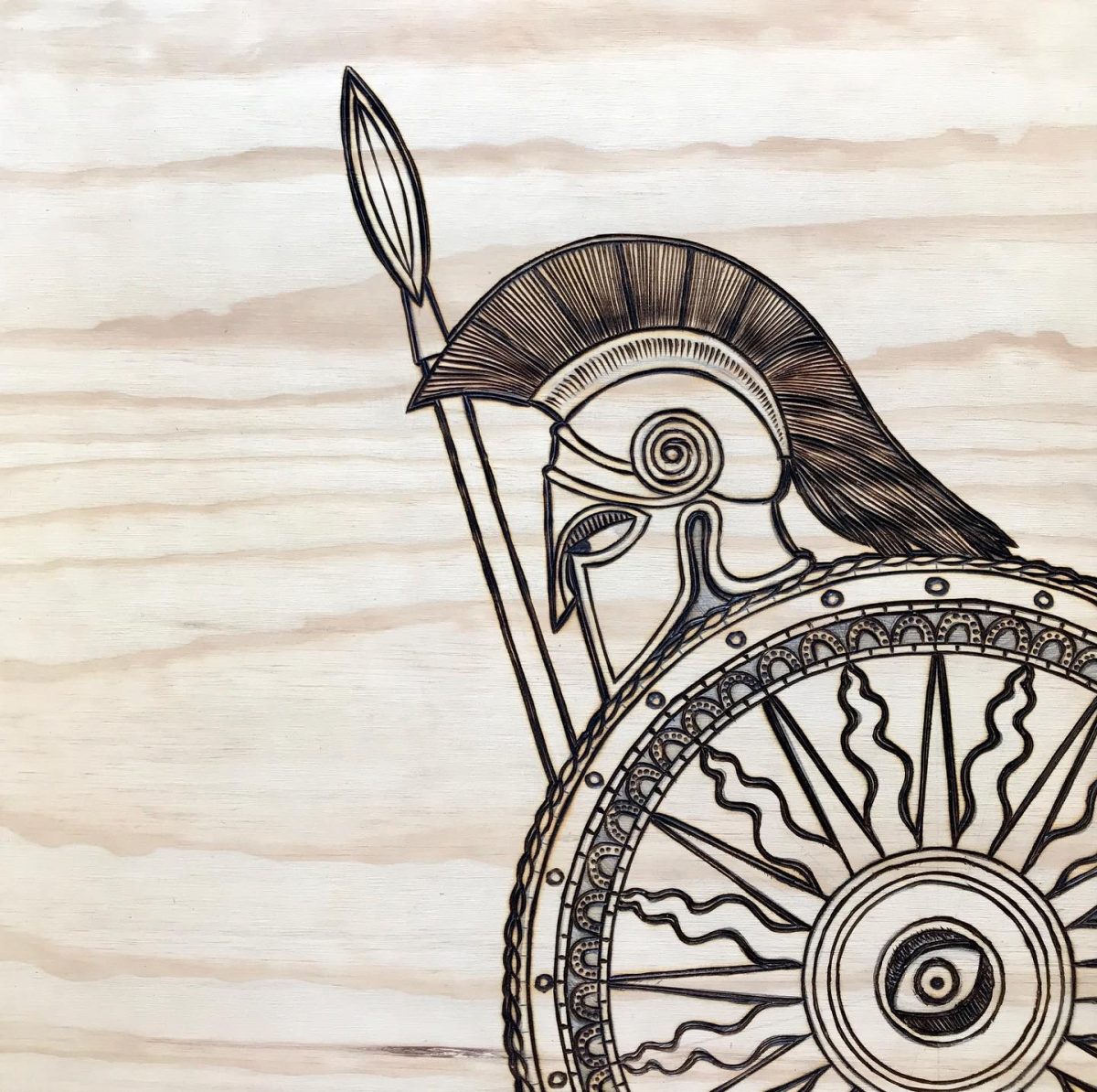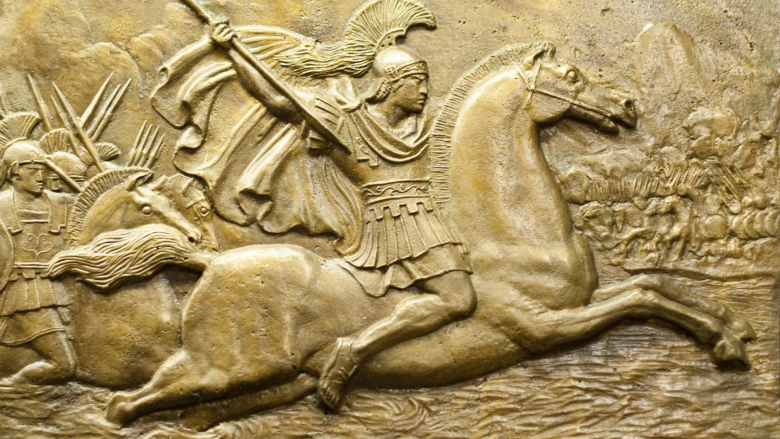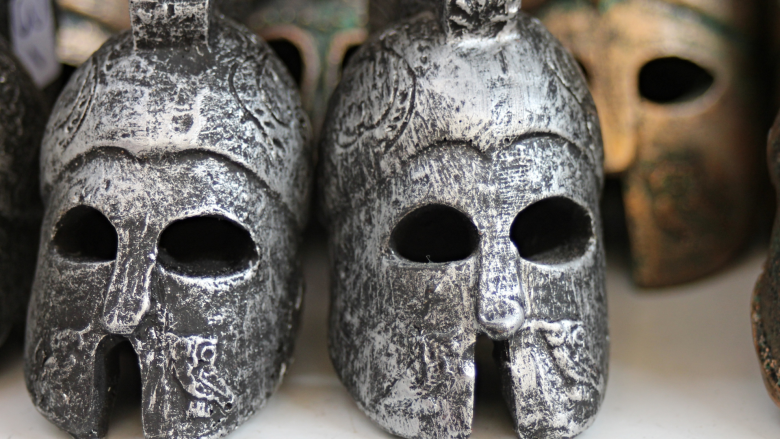The “Legend” of the Cretan Archers

For this week’s article, we selected to tell the tale of the Cretan Archers.
The elite Cretan archers of the pre-Christian centuries are often seen accompanying units of the Lacedaemonians and later of Philip II and Alexander. The first description of them is given by Xenophon ¨Kyros Anavasis¨ who describes their small brass circular shields and powerful palinton bows.

Who were the Cretan Archers?
The Cretan Archers, according to ancient texts, make their appearance in the First Messenian War (mid-5th century). They were the best. Wanted as mercenaries in Asia, Africa, the islands, Sparta, Macedonia, and Belgium. The Spartans use them as mercenaries who perform their work perfectly. Also, in Marathon and Salamis, the Athenians lined up archers who are probably Cretans since only in Crete was the bow widely used due to the type of hunting that existed at that time. Archers also appear in Plataea, where a body of 300 archers causes great losses to the Persian army, while in the naval battle of Mycale they make their presence felt on the ships of the allied Greek camp.
Alexander the Great, as the great military genius that he was, recognizes the value of the bow and joins the ranks of his numerous armies, a body of Cretan archers who follow him to the distant Indies until his death. They had Cretan leaders, the archers, and they carried the traditional weaponry, i.e. apart from the bow, a sword, a knife, and a small shield, which allowed them to fight from the stand as well. Together with the Macedonian archers, they constituted an autonomous unit, commanded by a general. In battle, they usually separated them.
Why were the Cretan Archers called the “Naked Warriors”?
The Cretan archers belonged to the category of Naked Warriors. That is, they lacked armor and usually belonged to this category of the poorest strata. Their weapons were nothing more than their hunting bows. The armor worn by the Cretan archers was: an open helmet with large openings so that they had a large field of vision and a small and straight brim. Its decoration is also impressive with themes from nature. The rank and file had plumes on their helmets to immediately stand out.

The weapons of the Cretan Archers
The bow they used at first was wooden but over time they perfected it. Reinforced at the ends with a horn which gives great strength to the construction.
The arrowheads they used were metallic copper but also sometimes iron. The arrow on the back had feathers, usually in a triangular arrangement, to maintain its stability. They carried their arrows in a quiver which was wooden and had a cylindrical shape.
For their protection, the Cretan archers, like the light infantry they were, carried a round metal shield. Its surface was brass or bronze to be relatively light. Also, it offered some protection against piercing blows from javelins, arrows, and especially spears and swords. They also carried a breastplate made of sheepskin or leather depending on the finances of each archer. Since, as mentioned, they were mercenaries in other armies. While the shin guards made of brass are also a necessary defensive tool.
The Cretan archers are all managed by one person and usually act in a group of ten (10) people. Their usefulness in war is great for this reason and various opposing armies use them.

Want to find out the myths and legends that took place in Crete?
Below we have selected a few of our mythical blog posts to transfer you far away to a magical land.
The Legend of Ariadne has it all, Love, Death, and Betrayal
Her story is reminiscent of Medea, her mother’s niece. Both fell in love with a stranger, helped him by interfering with the father’s will and violating the father’s plans, eloped with him, killed or helped to kill the brother (Medea killed Absyrtus, Ariadne helped to kill her half-brother Minotaur), betray the paternal house as a whole, to finally be abandoned by the stranger.
The most Famous Mythical creature of Crete, the Minotaur
Within the framework of the representation of rivers as human-headed bulls, what place could the exact opposite representation, that of a man with a bull’s head, have? We are of course referring to the Minotaur. On a Cycladic amphora with relief decoration on the neck, the Minotaur is represented with a human head and horns – this is inferred from the part of the head that survived.
The Mythical Inventor: Daedalus
In Greek mythology, Daedalus was a skillful architect and craftsman, seen as a symbol of wisdom, knowledge, and power.
Among his most famous creations are the wooden cow for Pasiphaë, the Labyrinth for King Minos of Crete which imprisoned the Minotaur, and the wings that he and his son Icarus used to escape Crete.
The Unknown Story of Pasiphae
Her story is connected to her illegitimate and unnatural love for the bull that Poseidon emerged from the sea, a sign of the gods’ preference for Minos in the dispute he had with his brothers Radamanthis and Sarpedon for power. However, while this act of Poseidon secured power to Minos without bloodshed, Minos did not sacrifice the animal, as he had promised. On the contrary, he sent it to his flocks because of its beauty and to preserve its race.
Feature Image by @natewilson (IG Profile)
